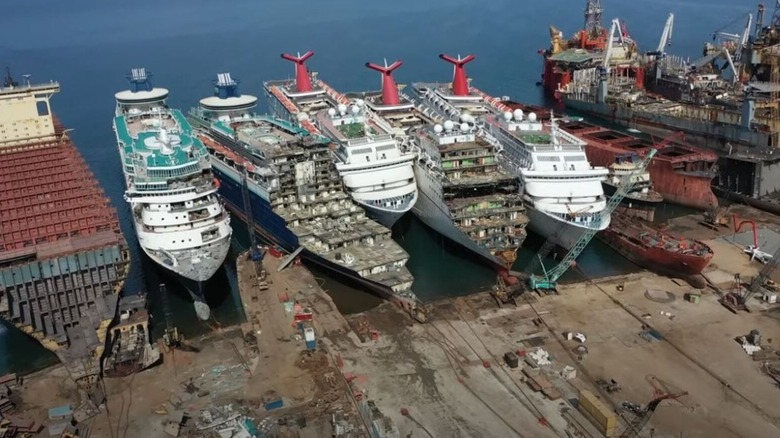The Lifecycle of Cruise Ships and the Role of Shipbreaking Yards
As of 2023, there were over 450 cruise ships of varying sizes navigating the world’s oceans. These vessels offer a wide range of itineraries, from short two-day trips to extended voyages lasting more than ten days. While these ships provide luxury and adventure for passengers, they also face significant challenges throughout their operational lifespan.
Cruise ships are complex machines that undergo constant wear and tear due to exposure to seawater, harsh weather conditions, and regular use. Over time, this degradation can lead to increased maintenance costs and reduced efficiency. Most cruise ships have an average usable life of up to 30 years, but other factors such as technological obsolescence or unexpected damage can also influence when a ship is retired.
Not all retired cruise ships end up being scrapped. Some are sold to smaller cruise companies or repurposed after undergoing renovations and rebranding. This allows for continued use and helps offset the high costs associated with building new vessels.
For those ships that are no longer viable for operation, they are typically sent to shipbreaking yards. One of the largest and most well-known facilities is Alang in Gujarat, India. Since 1983, Alang has been a major hub for dismantling ships, offering a valuable service to the maritime industry.
Why Alang Is a Major Shipbreaking Yard
Alang’s location in the Cambay Gulf region makes it ideal for shipbreaking operations. Its climate, tidal conditions, and water depth provide favorable environments for the process. The facility spans approximately 9.3 miles and includes 135 different shipbreaking yards. These yards employ around 15,000 individuals and account for nearly 98% of India’s ship recycling business.
The process of scrapping a ship at Alang begins with documenting and cataloging its components, including the powerful engines that once powered the vessel. Using tools like acetylene cutting torches, mechanical equipment, and other methods, the ship is cut into smaller sections. These parts are then sorted by material type—such as metal, plastic, and glass.
Steel is the primary component of most ships, making up between 75-85% of a vessel’s total weight. Alang recycles about 75% of the steel it retrieves from scrapped ships. This recycled steel is then processed into finished products used in various industries, including construction and shipbuilding. For materials that cannot be recycled or are hazardous, Alang has specialized facilities to handle them safely.
Economic Value and Environmental Concerns
Scrapping a cruise ship can generate significant revenue. Depending on the size and condition of the vessel, the process can yield anywhere from one to eight million dollars. Selling a used cruise ship can even fetch up to $162 million, making it a lucrative option for some operators.
Despite the economic benefits, the operations at shipbreaking yards like Alang have raised concerns about their impact on human health and the environment. The process involves handling toxic materials and generating waste, which can pose risks if not managed properly. There is a growing need for improved safety measures and environmental safeguards to ensure that shipbreaking remains both sustainable and responsible.
While Alang continues to play a critical role in the lifecycle of cruise ships, ongoing efforts are necessary to make the process cleaner and safer for workers and the surrounding communities. As the maritime industry evolves, so too must the practices that support the retirement and recycling of these massive vessels.



